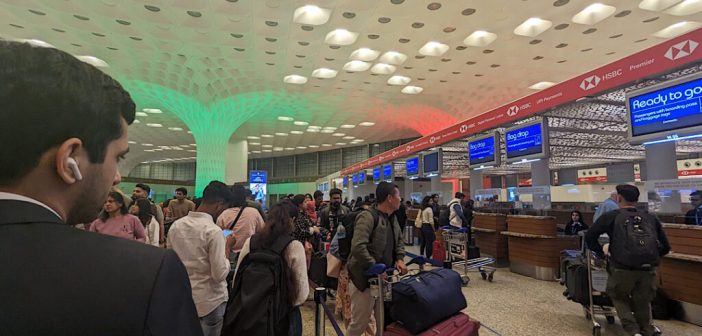India’s aviation industry is experiencing a remarkable surge, with passenger traffic at Indian airports witnessing a meteoric rise. This growth is fueled by a confluence of factors, intertwined with the nation’s burgeoning economic boom. Let’s delve into the forces propelling this upward trajectory and explore the implications for the future.
Economic Boom – A Catalyst for Change:
India’s economic growth story is well-documented. A burgeoning middle class with rising disposable incomes is driving a significant shift in travel patterns. Air travel, once considered a luxury, is now increasingly viewed as an accessible and preferred mode of transportation. This newfound affordability has led to a surge in demand for domestic flights, connecting people across the vast geographical landscape with unprecedented ease.
Low-Cost Carriers Democratizing the Skies:
The emergence of low-cost carriers (LCCs) has been a game-changer. By offering competitive fares and streamlined services, they have made air travel accessible to a wider segment of the population. This has not only stimulated demand but also fostered competition among airlines, further driving down prices and making air travel even more attractive.
Improved Connectivity and Infrastructure:
The Indian government’s focus on infrastructure development has played a crucial role in this growth. New airports are being constructed, existing ones are being expanded, and air connectivity between smaller cities is improving. This enhanced network is facilitating seamless travel within the country, opening up new destinations and business opportunities.
Shifting Travel Preferences:
A cultural shift towards leisure travel is also contributing to the boom. Indians are increasingly seeking vacations and exploring new destinations, both domestically and internationally. This trend, coupled with the growing popularity of weekend getaways, is further fueling the demand for air travel.
Technological Advancements:
Technological advancements are streamlining the air travel experience. Online booking platforms, mobile apps, and digital payment solutions have made the process more convenient and accessible, further encouraging people to take to the skies.
Challenges and the Road Ahead:
While the growth presents exciting possibilities, it also poses challenges. Airport infrastructure needs to keep pace with the rapid increase in passenger traffic. Concerns regarding congestion, delays, and the need for skilled personnel are crucial aspects that require immediate attention.
Investing in the Future:
The Indian government and aviation authorities are actively addressing these challenges. Initiatives like the UDAN scheme (Ude Desh Ka Aam Nagrik) are aimed at promoting regional connectivity and developing smaller airports. Additionally, investments in modern technologies like automation and artificial intelligence are being explored to improve operational efficiency and passenger experience.
Conclusion:
India’s aviation sector is experiencing a period of unprecedented growth, driven by a confluence of economic prosperity, changing travel preferences, and strategic policy decisions. As the nation’s economic boom continues, the sky’s the limit for passenger traffic at Indian airports. With a focus on infrastructure development, technological advancements, and efficient management, the Indian aviation industry is poised to soar even higher in the years to come.





